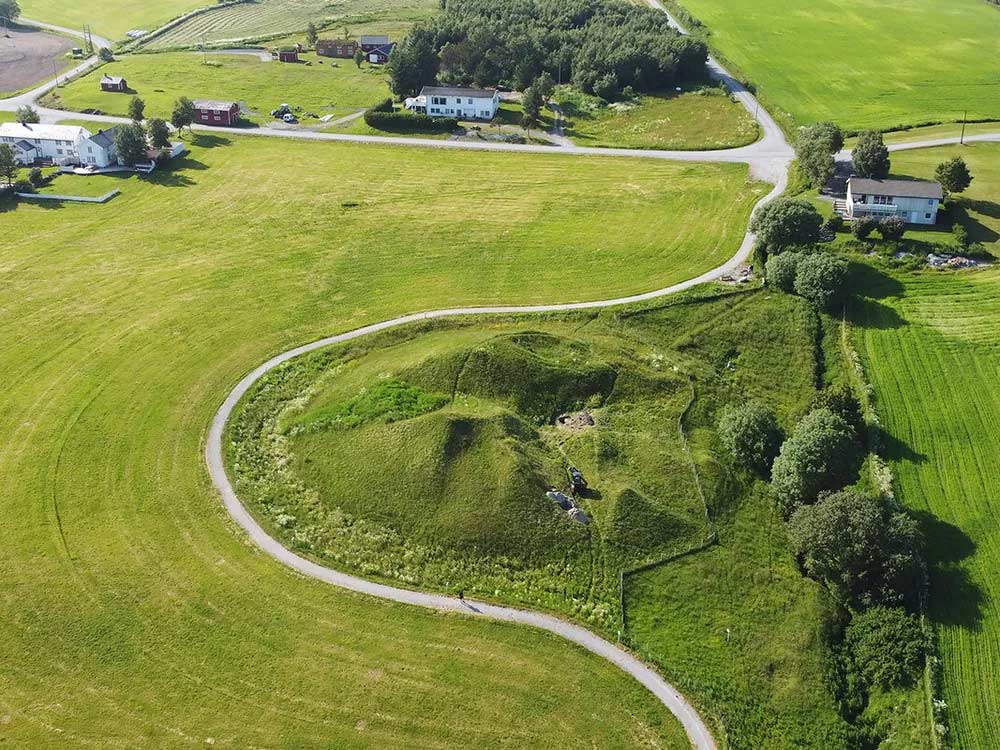The archeological community is abuzz after a significant find on the island of Leka, which is situated in the northern part of Trøndelag county in Norway. Located on the northern Atlantic coast, it has been well-known for years as the likely spot of a burial mound. Known as the Herlaugshaugen burial mound, the site measures nearly 200 feet in diameter. The grassy hill was named for King Herlaug, a Viking monarch believed to have buried himself alive, along with some of his companions rather than face defeat by a rival.

Photo Credit: Hanne Bryn / NTNU University Museum
Dr. Geir Grønnesby, an archeologist at the Norwegian University of Science and Technology, was involved in supervising the dig. The project was initiated when archaeologists and a metal detectorist started to conduct a small survey of the mound on behalf of the Norwegian Directorate for Cultural Heritage. They wanted to determine if the site once held a ship, and started a small dig for the large site.
While the exploration of this site is not new—it was first excavated in the late 1700’s—this unearthing revealed something previously unknown. The three tunnels previously bored into the mound produced artifacts such as nails, animal bones, a bronze cauldron and a human skeleton sitting upright and holding a sword. Those items were recovered and exhibited for a time at the Trondheim Cathedral School until they were lost in the early 1920’s and remain unaccounted for to this day.
During this most recent dig, wood fragments were found, verifying that the spot had harbored a ship. When radiocarbon tested, the wood dated back to around 700 A.D., making it the oldest known example of a Viking ship burial.
This dating is significant, because historians mark the Viking Era as having begun in 793 when the Viking attack of Lindisfarne Abbey in England occurred. The implications of this find suggest a few things. For one, seaworthy ships of this caliber may have been built earlier than previously thought and those who built them may have been involved in trading goods over great distances.
With wood predating the Viking era by nearly 100 years, this discovery continues to shed light on the tradition of ship burials and the era just before the Viking age.
Sources:
https://news.artnet.com/art-world/norwegian-ship-burial-2409608
https://www.nytimes.com/2024/05/31/science/archaeology-vikings-ship-burial.html?unlocked_article_code=1.xE0.aZai.11MKMT7EA7B0&%3Bsmid=url-share&utm_source=sdrn%3Avg%3Aarticle%3AjQzg0A
https://www.smithsonianmag.com/smart-news/1300-year-old-ship-burial-discovered-in-norway-180983508/
https://arkeonews.net/scandinavias-oldest-identified-ship-burial-in-trondelag-rewrites-history/
